The Victorian Era is a period of literature marked by moral realism, social criticism, and a focus on the complexities of industrial and societal change. The literary works of this time majorly concentrated on the struggles of the working class, the impact of industrialization, and the shifting roles of gender and family. They carried themes like class disparity, morality, progress, and the conflict between tradition and modernity. However, romance also became a major element of these works and manifested in depictions of personal relationships.
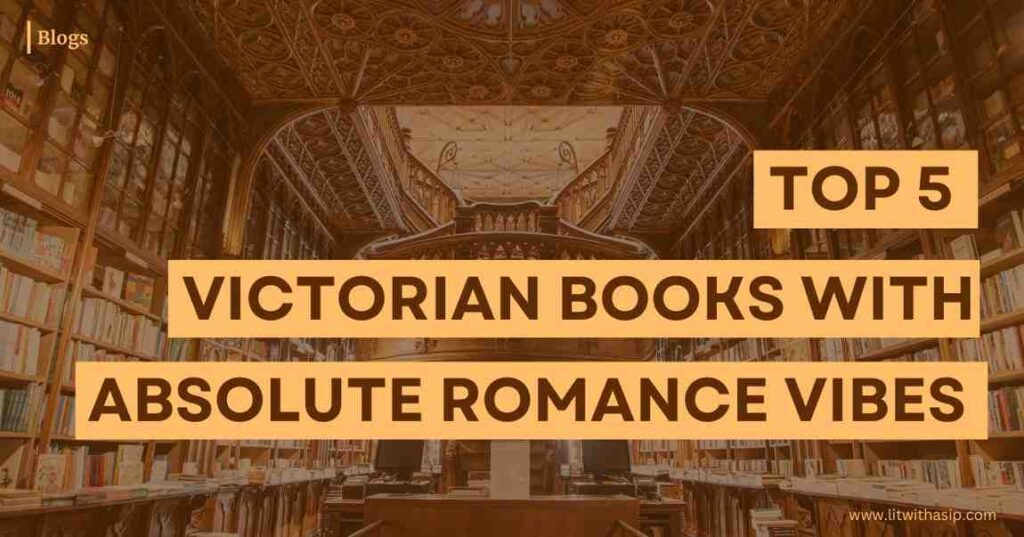
Today, we have in store some of the most brilliant romance novels of the Victorian Era that continue to capture the delicate balance between passion and societal expectations. They offer timeless stories of love, duty, and moral dilemmas. So, let us explore the top five Victorian books that will sweep you into timeless tales of deep emotion and intricate relationships.
“Pride and Prejudice” by Jane Austen (1813)
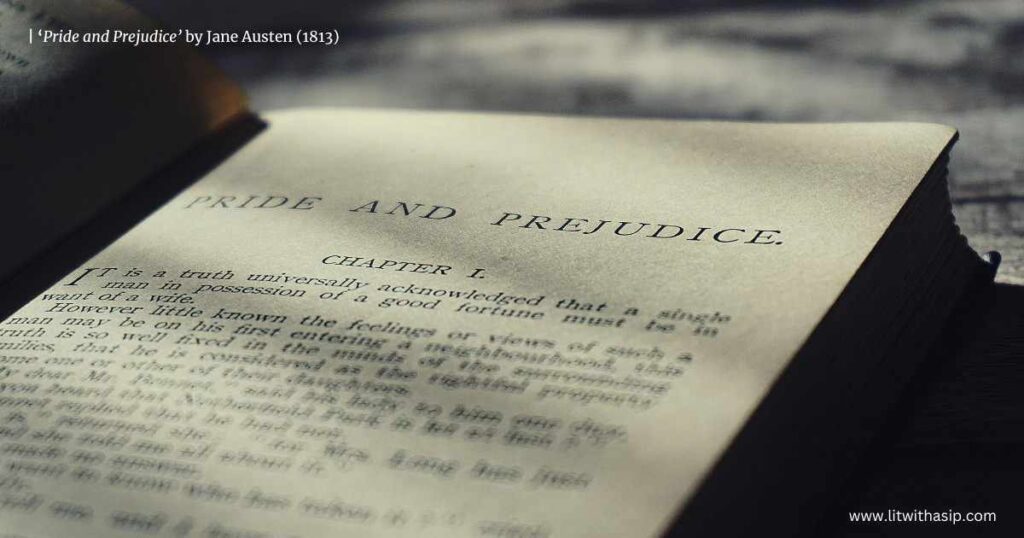
The first one on the list is a classic tale of misunderstandings leading to love and affection. ‘Pride and Prejudice’ by Jane Austen is a hate-love story between the spirited Elizabeth Bennet and the wealthy but initially aloof Mr. Darcy. Exploring themes of social class and romantic ideals, Austen masterfully portrays pride, prejudice, class, and marriage to deliver a sharp social commentary.
Love relationships are also drawn between characters like Jane Bennet and Mr. Bingley, Charlotte Lucas, and Mr. Collins, and Lydia Bennet and Mr. Wickham. Each of these couples brings their own unique flavor to the story. These relationships add depth and variety to the exploration of love, showing different facets of romantic and social dynamics in the world Austen creates. Her use of witty dialogue, keen observations of human nature, and richly drawn characters ensure that ‘Pride and Prejudice’ remains one of the most beloved and enduring romance novels of the Victorian era, despite being written just before it.
“Jane Eyre” by Charlotte Brontë (1847)
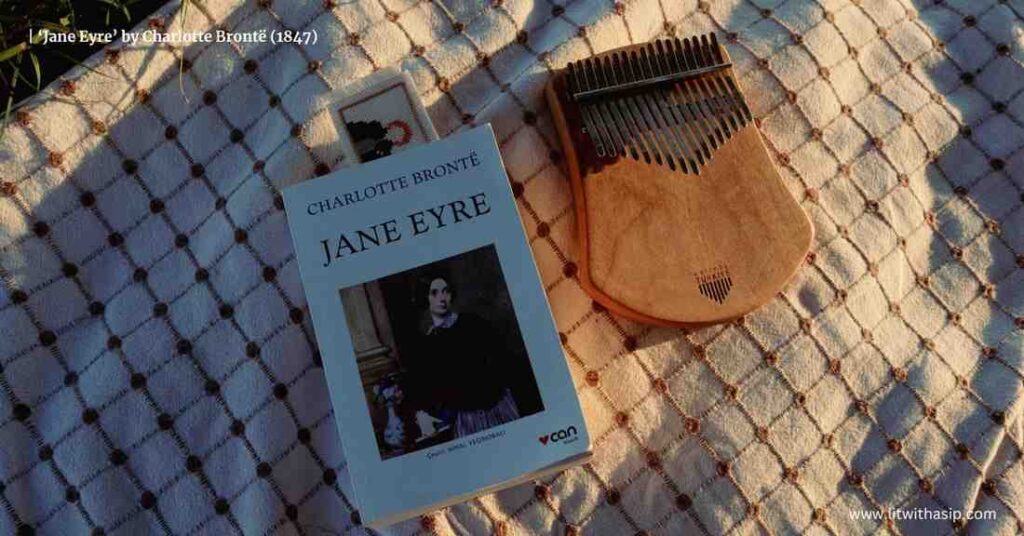
Next on the list, we have ‘Jane Eyre’ by Charlotte Brontë, which stands out due to its intense and emotionally charged love story between Jane and Mr. Rochester. Their relationship, marked by secrecy, mystery, and deep passion, explores the complexities of love, independence, and personal identity. Brontë’s portrayal of Jane’s internal struggle between following her heart and adhering to her moral principles resonates deeply with readers, making it a timeless romance.
The Gothic atmosphere surrounding Thornfield Hall and the dramatic twists in Jane and Rochester’s relationship add further layers to the romance, making it a captivating love story that transcends time. ‘Jane Eyre’ offers a deeply emotional and thought-provoking exploration of love, self-respect, and personal growth, making it more than just a romance—it’s a journey of empowerment and resilience that continues to resonate with readers across generations.
“Wuthering Heights” by Emily Brontë (1847)

‘Wuthering Heights’ by Emily Brontë is another intense and passionate love story of the Victorian era. It is set against the wild and untamed backdrop of the Yorkshire moors. The love between its protagonists, Heathcliff and Catherine Earnshaw, is raw, destructive, and transcendent. Their bond is filled with deep emotions that defy societal norms. Even though toxic and tempestuous, it is portrayed as a force of nature—uncontrollable and enduring beyond death. The Gothic elements, such as the eerie setting of Wuthering Heights and the ghostly presence of Catherine, add a haunting and supernatural layer to their romance. It makes the story as dark as it is compelling.
Overall, ‘Wuthering Heights’ is a tale of obsessive love and revenge, where passion and pain are inseparably intertwined. This book challenges conventional romantic ideals by presenting a love story rooted in deep, often destructive emotions. The novel’s unique blend of Gothic drama, emotional intensity, and moral ambiguity creates a romance that is both haunting and unforgettable, leaving a lasting impact on readers and securing its place as one of the most powerful love stories in Victorian literature.
“The Moonstone” by Wilkie Collins (1868)

‘The Moonstone’ by Wilkie Collins is from the latter half of the 19th century. Widely regarded as the first modern detective novel, it also weaves an intriguing romantic subplot that adds emotional depth to its tangled mystery. The story is set against the backdrop of a stolen diamond and a web of deceit.
The romance between Franklin Blake and Rachel Verinder falls central to the plot. Their relationship is strained by suspicion and mistrust as Franklin becomes a prime suspect in the theft of the Moonstone. The tension between them creates a compelling emotional undercurrent which underscores the suspense of the novel. The ultimate unraveling of the mystery not only resolves the crime but also brings the lovers closer to each other, highlighting themes of redemption and forgiveness.
Overall, ‘The Moonstone’ combines romance with mystery in a way that keeps readers intrigued in the plot as well as the emotional journeys of the characters. The novel explores how love can be tested by circumstances beyond control, and how trust and understanding can triumph over doubt and fear. Collins’ skillful blending of romance and detective fiction makes ‘The Moonstone a captivating read, offering both a thrilling mystery and a love story that feels genuine and rewarding.
“The Scarlet Pimpernel” by Baroness Orczy (1905)
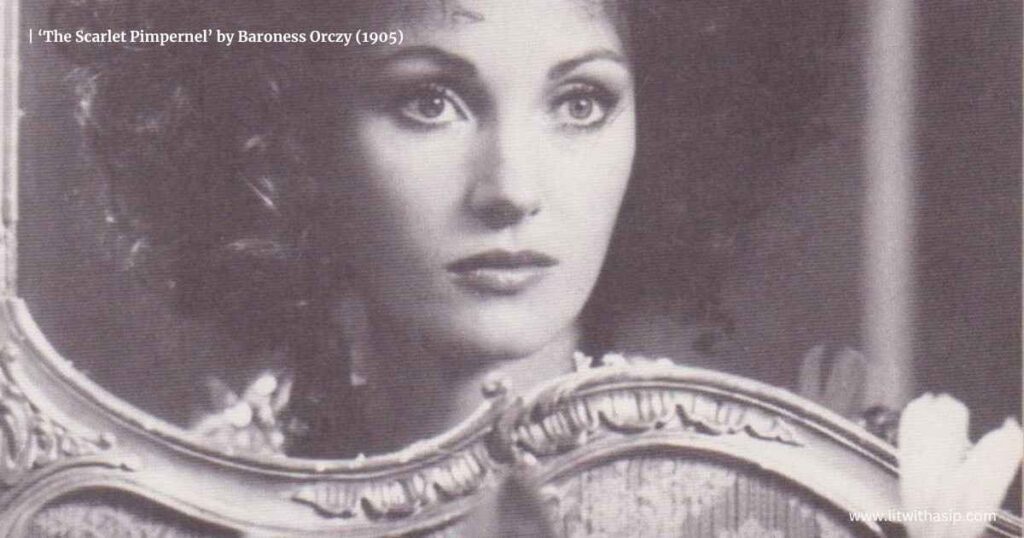
‘The Scarlet Pimpernel’ by Baroness Orczy was published in 1905. So, it technically does not belong to the Victorian Era because it was written after Queen Victoria’s reign ended in 1901. Instead, it belongs to the Edwardian era. However, it carries many of the dramatic and romantic elements which are often associated with Victorian literature. The story is set during the French Revolution and follows the daring and enigmatic Sir Percy Blakeney. He is a wealthy English baronet, who under the alias of ‘The Scarlet Pimpernel,’ secretly orchestrates the rescue of French aristocrats from the guillotine.
The plot revolves around the romance between Sir Percy and his wife, Marguerite. Their love is fraught with misunderstandings and emotional distance, stemming from Marguerite’s unwitting betrayal of Sir Percy’s mission. The novel blends the thrilling adventure and a deeply romantic reconciliation with Marguerite’s realization of her husband’s secret identity. This reignites their love and restores trust. ‘The Scarlet Pimpernel’ remains a riveting amalgamation of romance, adventure, and heroism, though it falls just a few years outside the Victorian period.
In conclusion, the timeless classics, as listed above, capture the enduring power of love in its many forms, making them some of the most essential reads for anyone drawn to rich, emotionally complex stories. Their exploration of love continues to intertwine with societal pressures and personal growth, ensuring that these works resonate deeply with readers to date. This also highlights the timeless and universal nature of romantic emotion and how it beautifully comes out through Victorian literary elements.

Jennis Jacob, a passionate literary enthusiast in her 20s, is a writer and poet. With eight years of experience in literature, she is currently a master in English and finds inspiration in Womanist, American, and Indian Partition Literatures. Her works have appeared in anthologies such as ‘Carved Words Of Creative Minds’ and ‘100 Splendid Voices,’ and she is working on upcoming books. Through LitWithASip, she aims to ignite a love for literature and empower individuals to embrace their true selves.

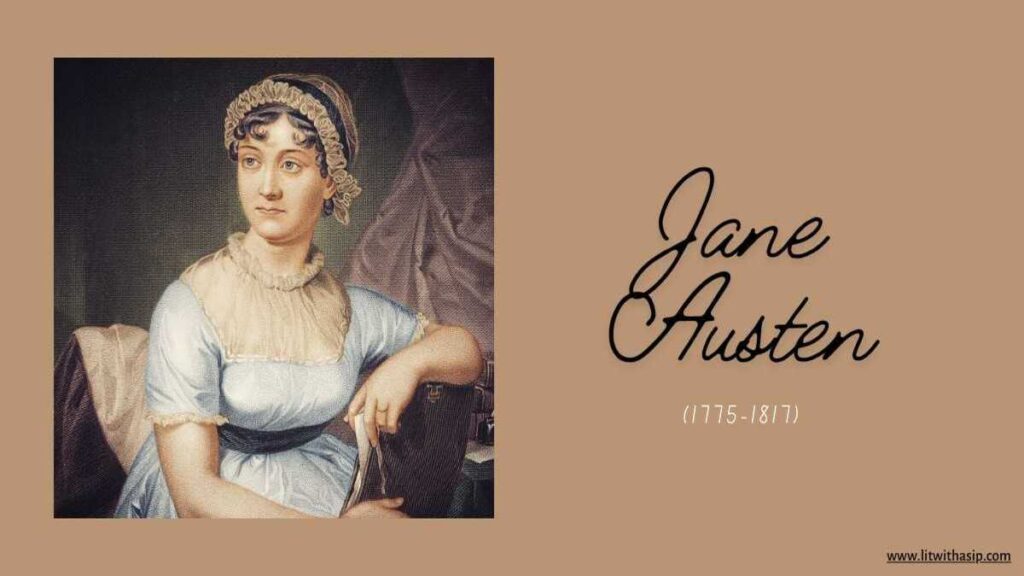
I have been exploring for a little for any high quality articles or weblog posts on this kind of space . Exploring in Yahoo I at last stumbled upon this site. Reading this info So i¦m happy to exhibit that I have a very excellent uncanny feeling I came upon exactly what I needed. I so much certainly will make sure to don¦t overlook this website and provides it a glance on a constant basis.
Thanks for your personal marvelous posting! I certainly enjoyed reading it, you will be a great author.I will be sure to bookmark your blog and may come back sometime soon. I want to encourage you to ultimately continue your great posts, have a nice evening!
Howdy! This is my first comment here so I just wanted to give a quick shout out and tell you I truly enjoy reading your articles. Can you recommend any other blogs/websites/forums that go over the same subjects? Thanks a ton!
I like this web blog its a master peace ! Glad I detected this on google .
Wow that was unusual. I just wrote an extremely long comment but after I clicked submit my comment didn’t show up. Grrrr… well I’m not writing all that over again. Anyway, just wanted to say excellent blog!
I have been absent for a while, but now I remember why I used to love this blog. Thank you, I will try and check back more frequently. How frequently you update your website?
Hi there! This post couldn’t be written any better! Reading through this post reminds me of my previous room mate! He always kept talking about this. I will forward this article to him. Pretty sure he will have a good read. Thank you for sharing!
What’s Taking place i am new to this, I stumbled upon this I have found It positively useful and it has aided me out loads. I hope to contribute & assist other customers like its aided me. Great job.